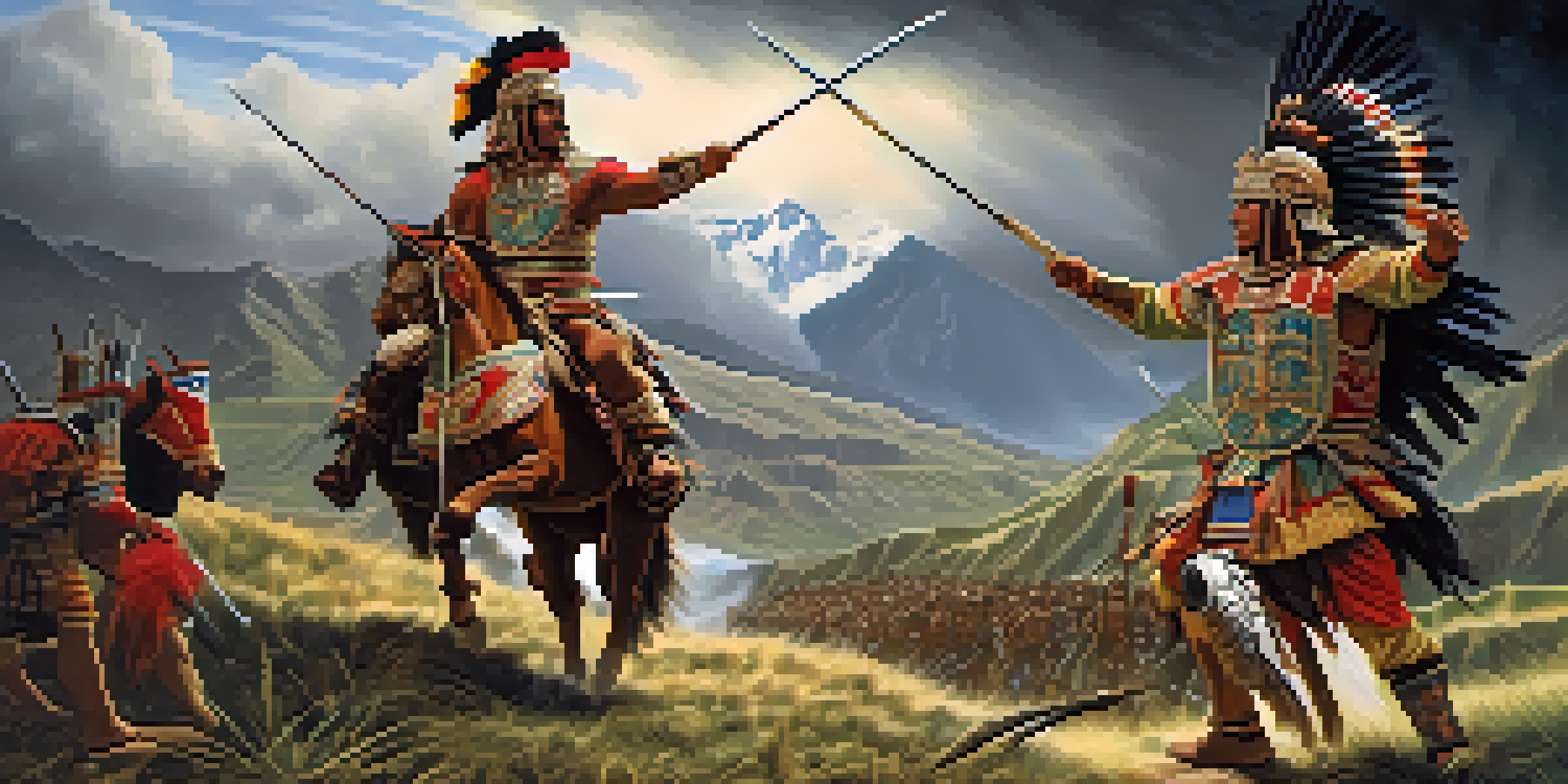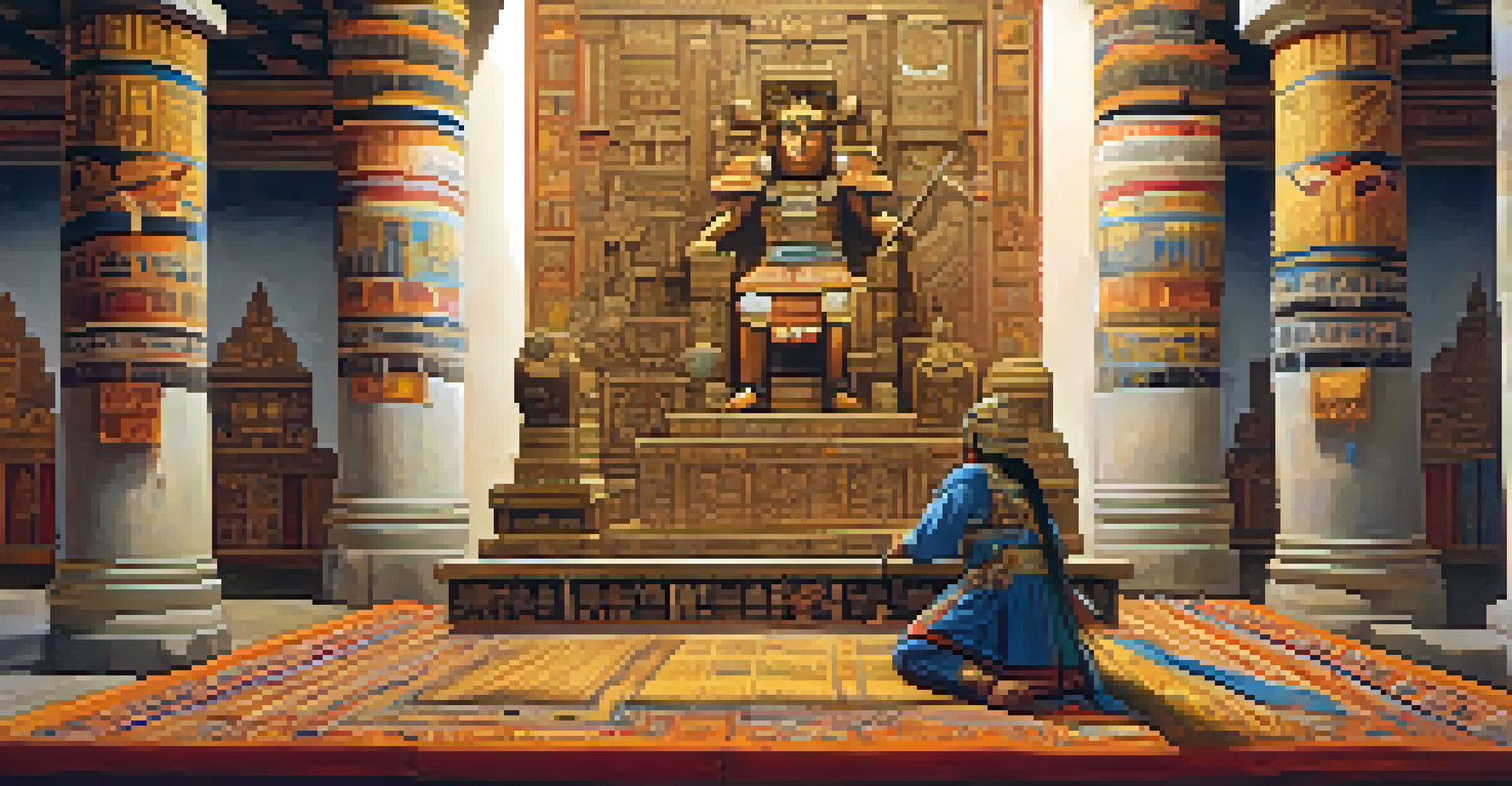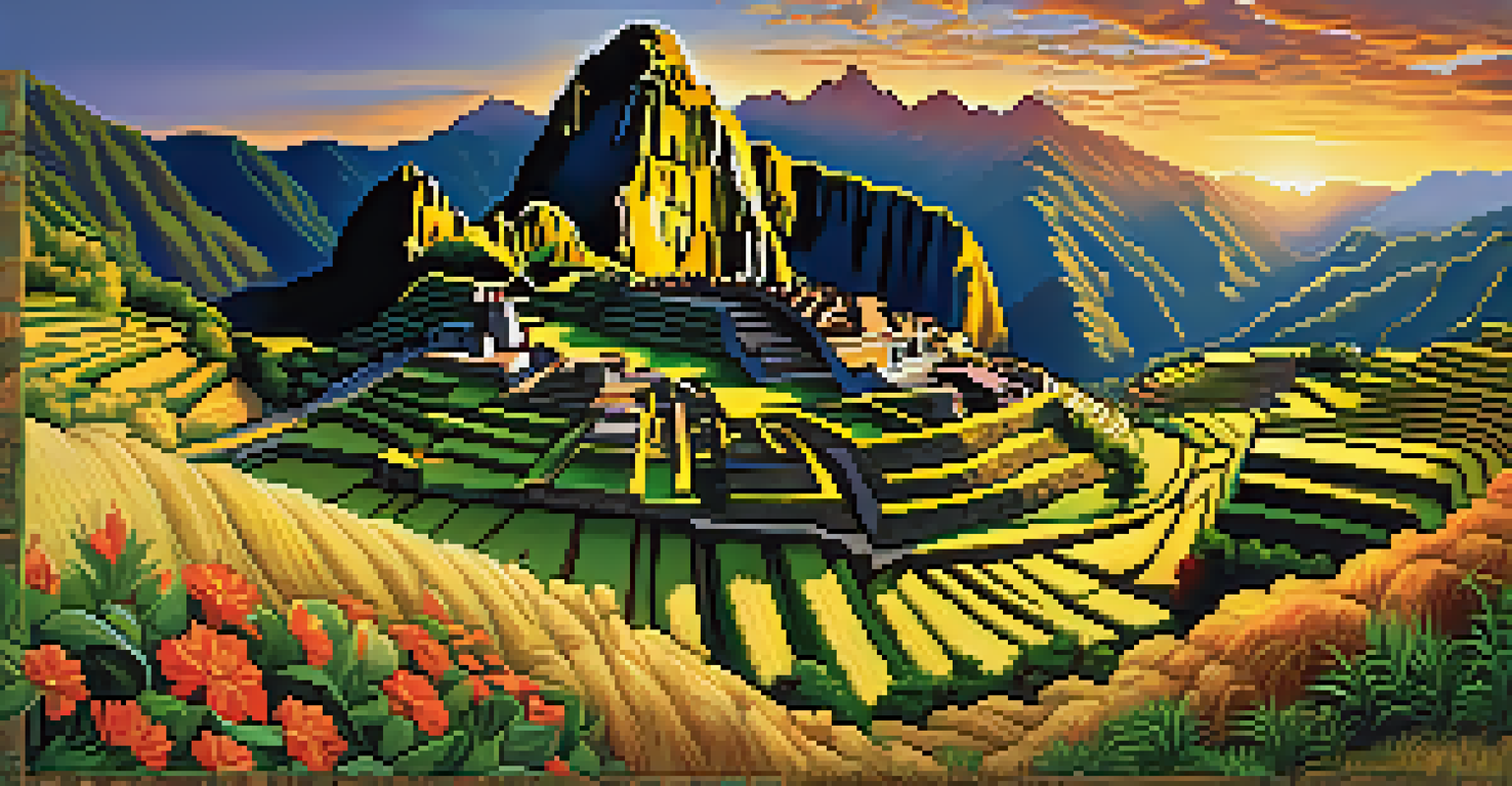Huascar and Atahualpa: The Last Inca Emperors' Rivalry

Introduction to the Inca Empire and its Leaders
The Inca Empire, once a vast and powerful civilization in South America, was known for its advanced architecture and sophisticated society. In its final years, two leaders emerged who would shape its destiny: Huascar and Atahualpa. Both were sons of the previous emperor, but their paths and ambitions would lead to a fierce rivalry.
The greatest danger in times of turbulence is not the turbulence; it is to act with yesterday's logic.
Huascar, the elder brother, was seen as the rightful heir to the throne, embodying the traditional values of the Inca elite. In contrast, Atahualpa, the younger brother, had strong military backing and a reputation for being a cunning strategist. This clash of ideologies and leadership styles set the stage for a civil war that would ultimately decide the fate of the empire.
Understanding the context of their rivalry is crucial to grasping the significant impact it had on the Inca Empire's downfall. As these two brothers vied for power, they not only battled each other but also faced the looming threat of Spanish conquest.
The Rise of Huascar: Traditionalist Values
Huascar ascended the throne with the support of the traditionalist factions within the Inca Empire. His reign was marked by a commitment to upholding the cultural and religious practices that had defined the Incas for centuries. He sought to unify the empire under his leadership, emphasizing loyalty and allegiance among the nobility.

However, Huascar's leadership faced challenges from those who believed that the empire required a more aggressive and militaristic approach to maintain its vast territories. This dissent sowed seeds of discord, as his brother Atahualpa began to gain popularity among the military and the provinces.
Huascar vs. Atahualpa: A Rivalry
The fierce rivalry between brothers Huascar and Atahualpa ultimately led to a civil war that weakened the Inca Empire.
As Huascar focused on consolidating power and reinforcing traditional values, he unwittingly created an opening for Atahualpa. This tension would soon boil over into a full-scale conflict, highlighting the fragility of leadership in times of uncertainty.
Atahualpa's Rise: Military Might and Ambition
Atahualpa, on the other hand, capitalized on the growing discontent with Huascar's rule. His military prowess and charismatic leadership attracted a loyal following, particularly among the warriors and common people who felt neglected by Huascar's administration. This shift in loyalty marked a turning point in the power dynamics of the empire.
In the midst of chaos, there is also opportunity.
With a strong army at his back, Atahualpa set out to challenge his brother's authority. His campaign was not just about seizing power; it was also about creating a new vision for the Inca Empire that aligned with the changing times. His ambition was palpable, and he swiftly gained control over several key regions.
As Atahualpa's influence grew, Huascar's position weakened, leading to a rising tide of tension between the brothers. This rivalry was more than a personal feud; it represented a fundamental clash of ideals that would have dire consequences for the empire.
The Outbreak of Civil War: Brothers at War
The rivalry between Huascar and Atahualpa escalated into a full-blown civil war, with both sides rallying their supporters. Battles were fought across the rugged terrain of the Andes, with each brother vying for control over the vast territories of the Inca Empire. The conflict was brutal, leaving a trail of destruction in its wake.
Huascar's forces initially had the advantage, relying on traditional military strategies and the loyalty of the nobility. However, Atahualpa's innovative tactics and strong leadership allowed him to turn the tide of battle. The struggle for supremacy became a fierce contest of wills, as both brothers sought to assert their dominance.
Civil War Opens Door to Conquest
The internal conflict created by the brothers' struggle for power left the Inca Empire vulnerable to Spanish conquest.
As the war raged on, the fabric of Inca society began to unravel. Families were divided, and long-standing alliances were tested, all while the looming threat of Spanish invaders loomed in the background. This civil war not only weakened the Inca Empire but also set the stage for its eventual downfall.
The Capture of Atahualpa: A Turning Point
As the civil war unfolded, Atahualpa managed to capture Huascar, marking a significant turning point in their rivalry. This act was not merely a victory in battle; it symbolized the deeper struggles for power and legitimacy within the Inca Empire. Atahualpa's triumph over his brother showcased his tactical brilliance but also highlighted the fragility of familial bonds in the pursuit of power.
With Huascar imprisoned, Atahualpa solidified his control over the empire. However, this victory was short-lived, as the arrival of Spanish conquistadors soon disrupted the power dynamics. The Spaniards, led by Francisco Pizarro, saw an opportunity amidst the chaos and sought to exploit the internal strife for their own gain.
Atahualpa's capture of Huascar ultimately led to unforeseen consequences. Instead of uniting the empire under his rule, it instead attracted foreign invaders, highlighting how internal divisions can leave a civilization vulnerable to external threats.
Spanish Conquest: The Final Blow to the Inca Empire
The arrival of the Spanish conquistadors marked a catastrophic turning point for the Inca Empire. Taking advantage of the ongoing civil war, Pizarro and his men capitalized on the weakened state of the Incas. Atahualpa, despite his military successes, found himself facing an enemy unlike any he had encountered before.
The Spaniards employed cunning tactics, including deception and alliances with discontented tribes, to further weaken Atahualpa's position. In a fateful confrontation, Atahualpa was captured, and the Inca Empire's fate was sealed. This marked the beginning of the end for the once-mighty civilization.
Lessons from Inca Leadership
The story of Huascar and Atahualpa highlights the importance of unity and foresight in leadership to avoid downfall.
As the Spanish continued their conquest, the internal divisions and rivalries within the Inca Empire became painfully evident. The civil war between Huascar and Atahualpa had left the empire vulnerable, allowing foreign forces to dismantle centuries of Inca culture and governance.
Legacy of Huascar and Atahualpa: Lessons Learned
The rivalry between Huascar and Atahualpa serves as a poignant reminder of how internal strife can lead to the downfall of even the most powerful empires. Their story illustrates the consequences of ambition, betrayal, and the complexities of leadership during tumultuous times. The lessons learned from their conflict resonate far beyond the Inca Empire.
In the grand tapestry of history, the clash between these two brothers highlights the importance of unity and foresight in leadership. Their inability to reconcile their differences ultimately paved the way for external forces to exploit their weaknesses, leading to the empire's collapse.

Today, the legacy of Huascar and Atahualpa is a testament to the enduring nature of human ambition and rivalry. Their story continues to inspire discussions about governance, power, and the fragility of civilization in the face of adversity.